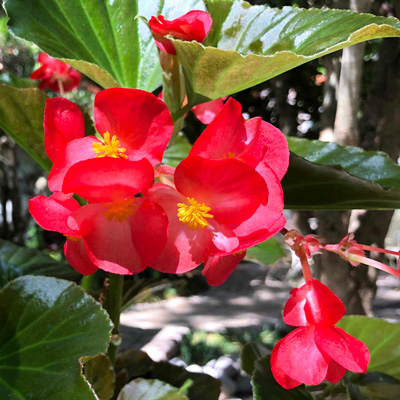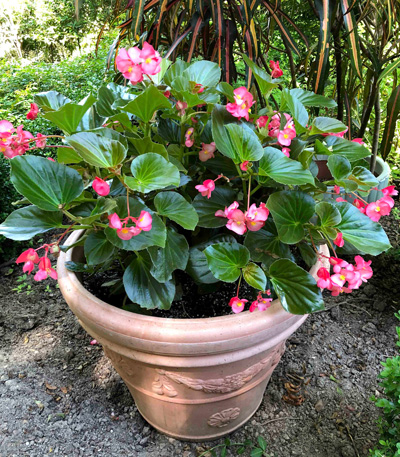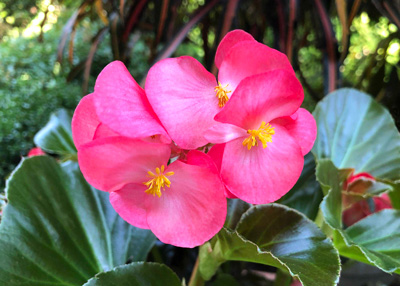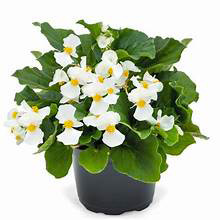Whopper Begonias Come to the Rescue

When I was in the 8th grade, my dad helped me build a small greenhouse. And in that small greenhouse I grew some small plants. They came from small seeds. Wax begonia seeds.
I knew they would be small, but when my packet arrived, I was amazed. Can you count 1 to 2 million seeds per ounce? That’s compared to tomatoes with 8,000-12,000 seeds per ounce or bluebonnets 850 seeds per ounce. They looked like dust. When they germinated they looked like tiny green moss.
I grew my wax begonias successfully (and carefully) and nurtured them for an entire season.

Well, in the ensuing (many) years, wax begonias have only gotten tons better. That’s when hybrids with two-toned flowers, bronze leaves, variegated foliage, more vigorous habits and other improvements started hitting the markets.
And then, along came the Whoppers!
Oh, my gosh! These things are spectacular.
They were named Texas Superstars® by the Aggies in 2016, and they’ve been a major part of our summer color program almost ever since. I’ve bought large pots and repotted them into larger pots and left them growing alongside our courtyard and drive. Instant and stunning color.
Here’s what you should know about Whopper begonias…
• Best if planted in April or early May so plants can become established before summer.
• Grow to 18 to 30 inches tall and 18 to 20 inches wide.
• Best in shade or part shade or early morning sun, perhaps with protection from the midday and afternoon sun.
• Both bronze- and green-leafed varieties are sold. Bronze types are more tolerant of sun.

• Red and pink flower colors are available. I haven’t grown the white form I see online, but I’ll bet it’s stunning.

• Virtually pest-free.
• Keep moist but not wet for prolonged periods. Do not get water on leaves when sun is hitting them in summer.
• Can be sheared back and over-wintered in pots in a warm greenhouse or very bright sunroom.
Can you still plant Whoppers if you find them?
I guess so, although I’d probably suggest that you plant them in pots so you can protect them from the first killing frosts. You’ll want to enjoy their rich colors as long as you can, especially if you get this late a start for this growing season.
